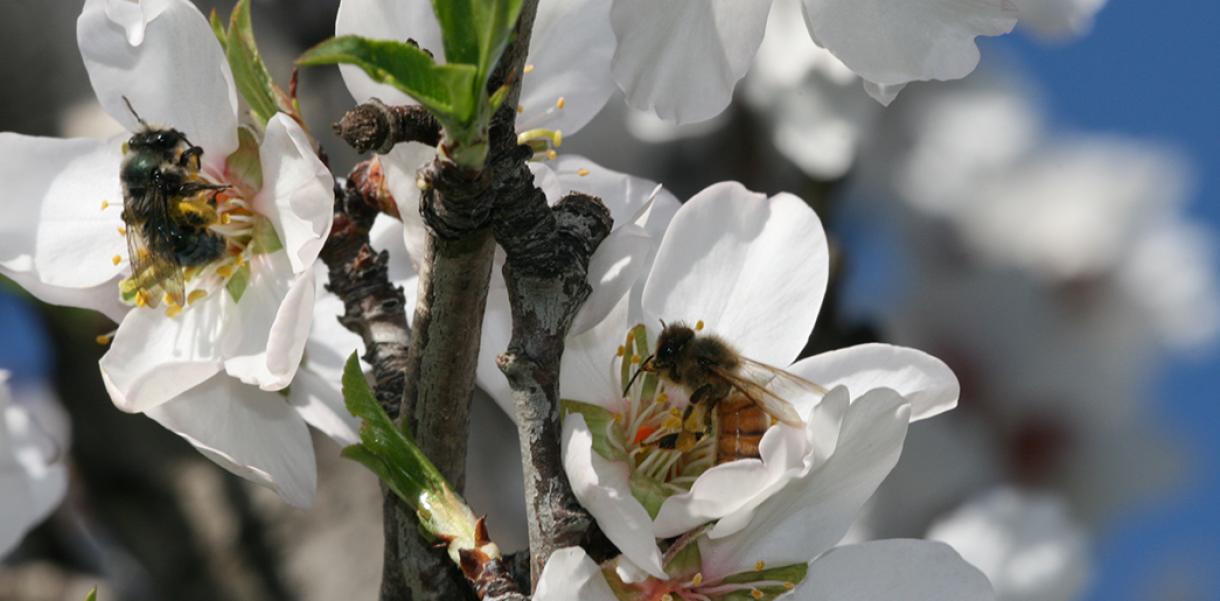Growing up I used to be relatively fine with bees. But, I still recall hearing fellow classmates at camp yelling with freight in their voices that they had just been stung by a bee. A tiny animal that most kids, and adults for that matter, treated and still treat with a good portion of fear.
While allergic reactions to insect stings surely can be life-threatening and should be handled with caution, bees, in general, aren’t around to attack humans.
Instead, we ought to consider them friendly and highly important co-inhabitants on earth as they carry a great deal of responsibility, ensuring that we can feed on foods such as fruit, vegetables, coffee and chocolate. In fact, up to one out of three bites of human food is made possible by pollinating insects, bees being the most important ones.
Furthermore, bees play a unique role in contributing to the eco-system of our earth, keeping plant and insect life healthy.
Bees also have properties that make them valuable assistants to humans beyond pollination and honey production. Due to their high intelligence, some researchers have successfully trained them to detect explosives and illegal drugs, while others have found them valuable within facial recognition research as they are able to distinguish human faces.
But, if you ask the internet, it’s clear that bees are facing some challenges causing populations to decline. For honeybees, those that are farmed and kept in hives for commercial purposes, it’s estimated that out of a global stock of 83 million beehives in 2014, 10 million hives have been lost. The decline in wild bees, which is any bee native to your local area, seems more ambiguous. However, this article suggests a decline of 23% from 2008 to 2013 in the US alone.
Given the qualities of bees mentioned above, the consequences of losing them are quite obvious. But, what are the challenges really about? What could we do to change the negative development? And what’s already being done?
Experts have struggled to figure out exactly why bee populations decline but seem to agree that climate change, urbanisation and parasite diseases are some of the biggest threats.
Due to a rise in the average temperature following climate change, flowers bloom earlier in Spring creating a potential mismatch between when flowers produce pollen and when bees are ready to feed on pollen. Even 4-6 days of mismatch can have a big effect. Imagine only being offered food when you can’t access it. What would you do?
Researchers are working to answer that question from a bee’s perspective. Professor Rebecca Irwin and her team study the impact of climate change on bees and the flowers they pollinate through the lens of phenology “the timing of when something occurs related to natural processes”. This video gives an inspiring and informative glimpse into how they work:Increased urbanisation has brought negative impacts for bees as well. With less nature land available, bees need to travel even longer distances to find pollen. This means they are more likely to run out of energy before they reach their destination.
Paper craftswoman Malgorzata Lasocka and four creatives from advertising company Satchi & Satchi imagined how urban life could offer bees a well-deserved pit stop when en route to their pollen destination.
They came up with an interesting solution. Bee Saving Paper, an INDEX: Award 2019 nominee, is essentially a glucose-filled biodegradable paper material that can be used for several purposes such as shopping bags, coffee cup sleeves or parking tickets – things bees would likely settle on anyway. The glucose fuels bees with energy, while red UV circles on the paper send a ‘safe landing zone’ signal to bees similar to what pollen and nectar-filled flowers do.Many identify disease caused by parasites as the dominating cause of the decline in bee populations. Some say this only applies to honeybees, while others suggest wild bees are exposed as well.
For both honeybees and wild bees, researchers suspect environmental stresses to increase infections. They have found that lower temperatures were related to lower levels of parasites, which indicates that increasing temperatures, as a result of climate change, could result in an increase in parasite infections.
Adding to this, globalisation help spread foreign parasite diseases across continents via travelling goods, such as honey.
Much of the medication previously used to prevent parasites is criticised for further harming honeybees, and more indirectly, wild bees. Earlier this year a group of scientists discovered a medication that may reduce up to 90-100% of the infecting parasite within the hive, without further harming the bees. A promising result if they manage to implement it.
Other research work has suggested a more natural approach, looking into how infected bees seek specific plants that offer them natural medicine – just like cats and dogs seek grass for their nausea.While experts clearly perform great work to help bees adapt or survive challenging conditions, there are small things you can do too to help bees in your local area:
- Buy local honey of good quality and make sure not to leave empty containers accessible to bees. Honey of bad quality often bought in bulk, risks containing pesticides and potentially parasites and your local bees will likely feed on empty containers left by the household trash.
- Offer them water wherever you have space for a little basin. They need hydration, especially during heated summer times, just like every other living creature. Make sure to put stones or floating cork in it so they won’t drown.
- Or build a bee hotel in your garden out of whatever material you have lying around. I built one in our garden house a few months ago and to my family’s great wonder, they asked: “A bee hotel? How do you make a reservation?”. But, upon a few explanatory sentences, we were quickly on the same page. And now my grandmother has one in her garden too!




